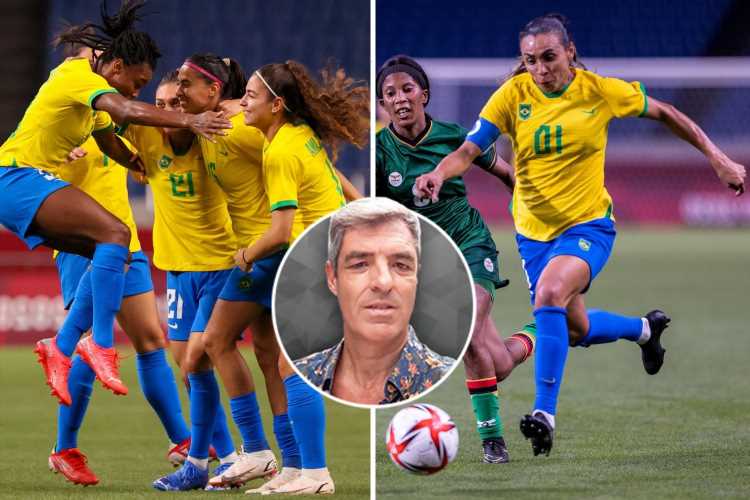THE first women’s football tournament in the Olympics was back in 1996 in Atlanta.
Brazil were there, but their administrators did not appear to take the team very seriously.
The women were in the back of the plane, while the men’s team flew first class. And the women were only given enough pennants – the things that the captains swap before kick off – for the group phase.
When Brazil made it out of the group, the goalkeeper had to teach the captain the rudimentary English to apologise for the lack of a pennant.
They have come a long way since – and Formiga has come with them all the way. The busy central midfielder (‘Formiga’ is a nickname, which translates as ‘ant’) was an 18 year old back in 1996.
Twenty five years later, at 43, she is still there- along with the great Marta, a mere junior at 35.
The current Olympic tournament could well be their last dance. Certainly it is hard to see Formiga continuing to play international football in a sport which is developing at a rapid pace.
Formiga and Marta have been through the highs and lows of the rollercoaster. A few years after the surprise bronze medal at the Atlanta Games, Brazil were one of the leading powers in the game.
The planet got to know Marta in the 2004 Olympic tournament – which in the women’s game has all the prestige of a World Cup, with no age restrictions, when Brazil lost in the final to the USA.
The same thing happened four years later. In between, in 2007, they lost to Germany in the final of the World Cup.
They have not been close since. The signs were there in the London Olympics nine years ago. In front of a big crowd at Wembley Brazil went down 1-0 to Great Britain.
Where a few years earlier Marta was cruising past opponents, now Brazil appeared to be at a physical disadvantage. The game had moved on.
Countries were investing in women’s football, and Brazil were paying the price for failing to improve their domestic structure. For a decade now they have been chasing after the runaway train of missed opportunity.
After the last World Cup two years ago, Brazil brought in a Swedish coach, Pia Sundhage, who, when in charge of the USA, had beaten them to the gold medal in 2008. This has not led to a revolution in personnel.
Sundhage has kept with most of the old guard. Seven of the usual starting line up are over 30, with none of the rest under 26.
Armed with a Scandinavian style 4-4-2, they are more attacking than under the previous coach. As the tournament goes on, it will be interesting to see whether they have the legs to cope.
They started off with a 5-0 win over China, a match where the scoreline flattered them a little.
They showed plenty of attacking threat, but their goal led a charmed life, with China continually hitting the woodwork.
Next up was a thrilling 3-3 draw against European champions Holland.
While on Tuesday they confirmed their place in the quarter finals against Zambia with a 1-0 win to set-up a match with Canada on Friday.
Now, it is win or go home. And in this case, ‘go home’ will mean – certainly for Formiga, and perhaps for Marta as well, leaving the international stage for the last time.
When that happens, they can exit with heads held high. Back in 1996, women’s football in Brazil was only coming out of a period when it had been illegal.
It is now a normal, healthy activity in the lives of many Brazilian females. Formiga, Marta and the others have made their sport legitimate, and they have done it with fire and skill.
Source: Read Full Article





